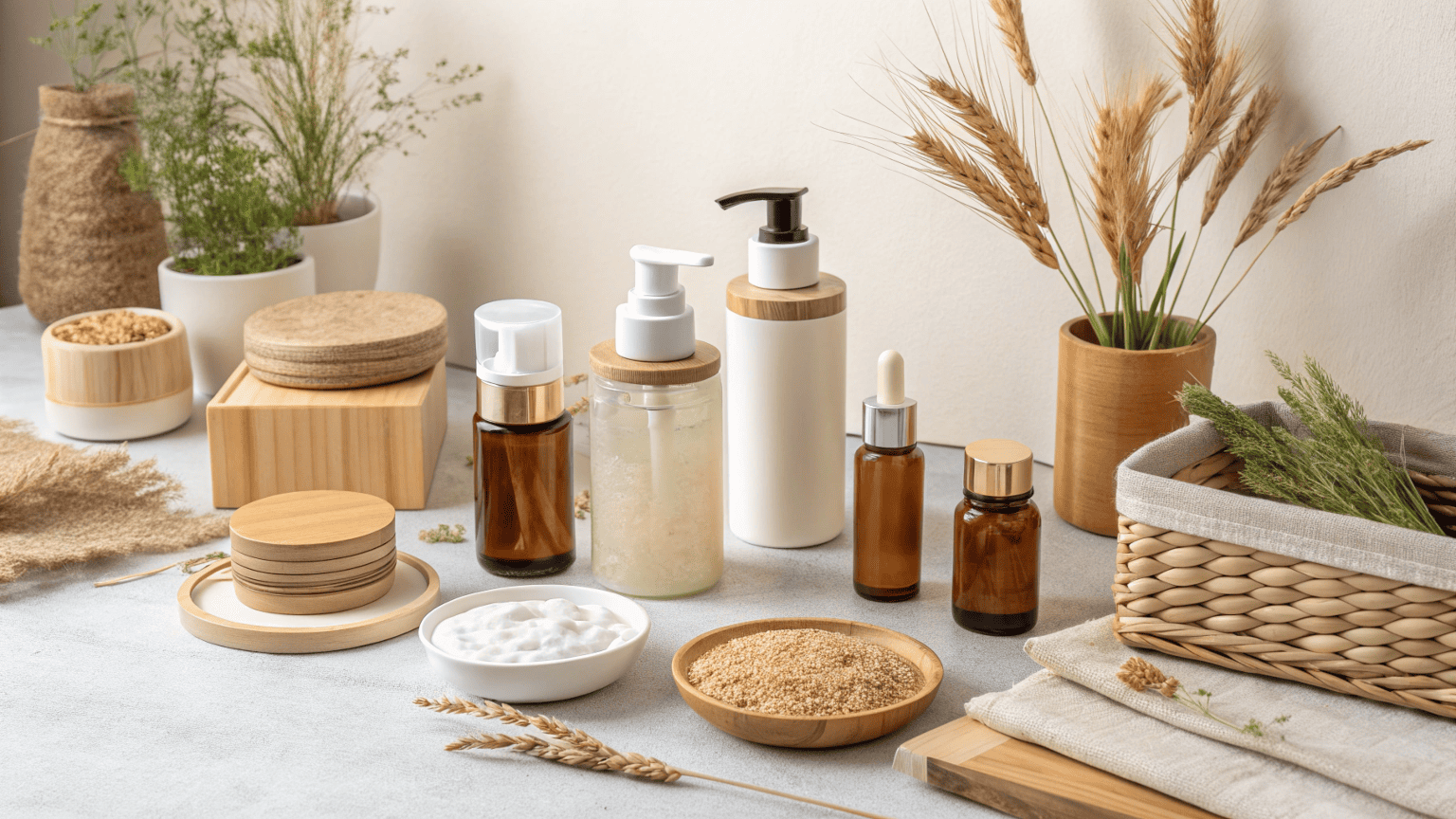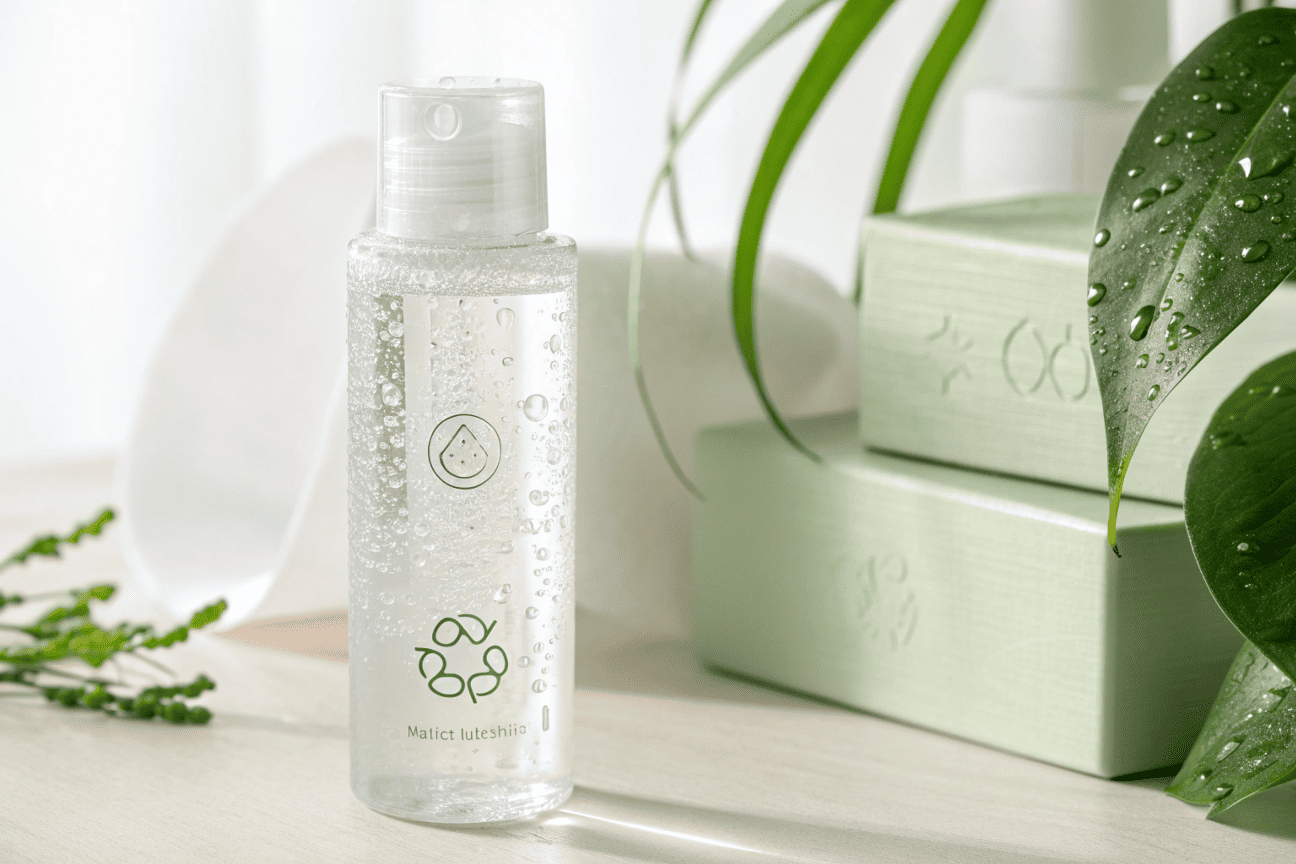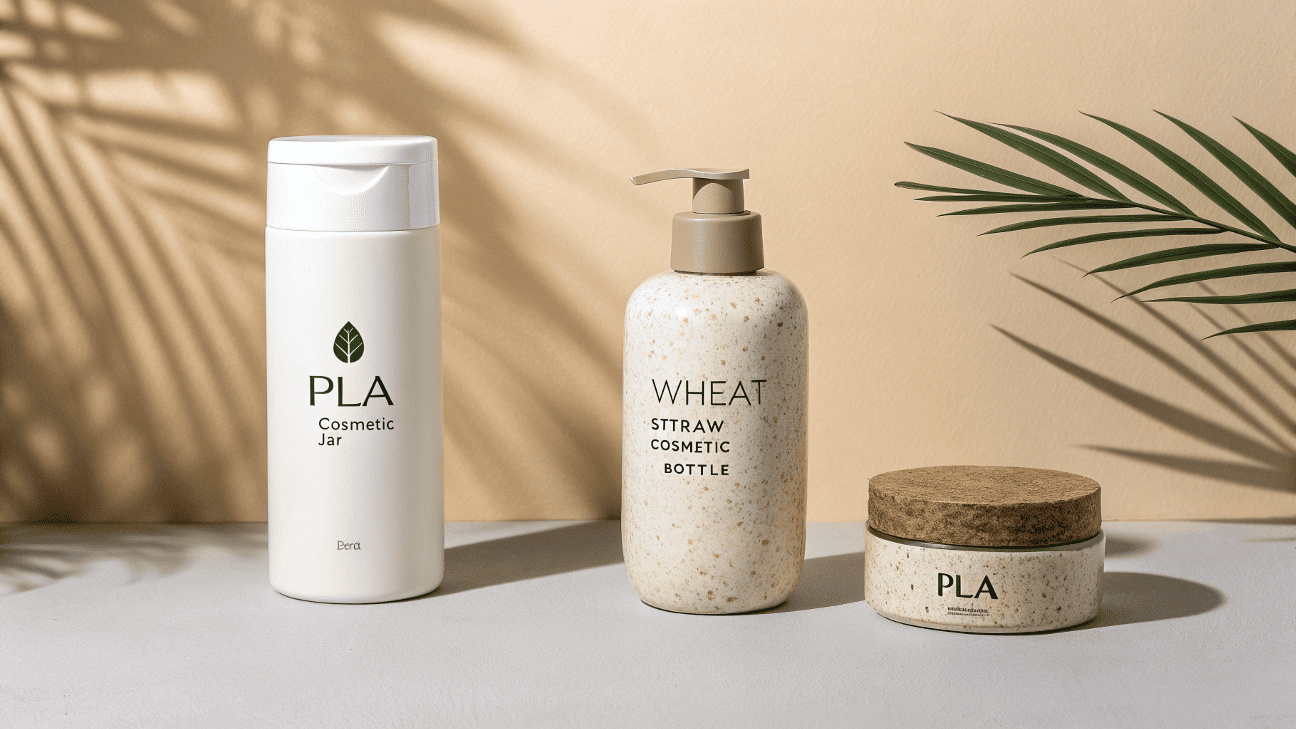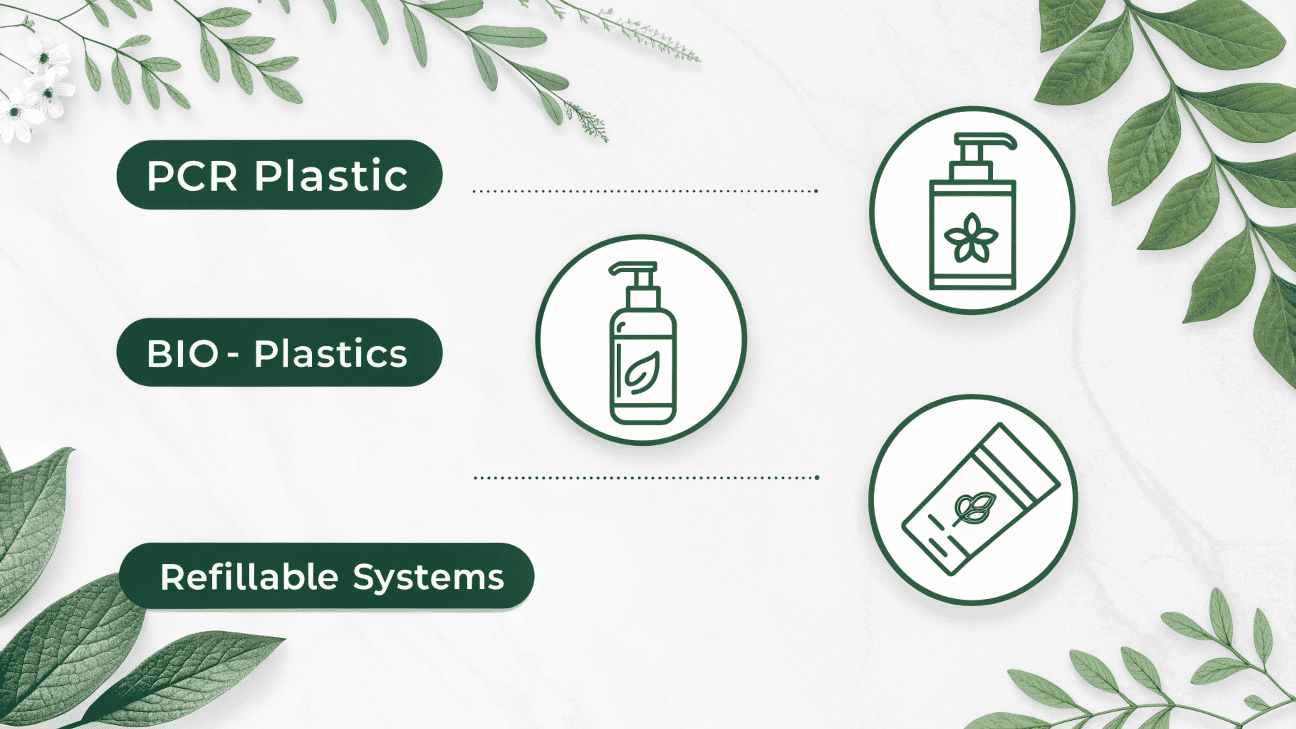
How Can You Find Truly Sustainable Cosmetic Packaging Materials?
September 11, 2025 • Mike Lee
Choosing "sustainable" packaging feels impossible. You face confusing claims and materials, fearing you'll pick one that isn't truly eco-friendly, doesn’t protect your product, or is too expensive for your budget.
Focus on three main categories: recycled plastics (like PCR), bio-plastics (like PLA), and refillable systems. For most brands, Post-Consumer Recycled (PCR) plastic offers the best balance of sustainability, performance, and cost-effectiveness today.

Here at Rland, I talk with brands about this every single day. The desire to be more eco-friendly is huge, but so is the confusion. The term "sustainable" is used so broadly that it can lose its meaning. My job is to cut through the noise and help clients find a solution that works for their product, their brand story, and their bottom line. It's not about finding a perfect solution, but the best practical solution for right now.
What Are the Top Eco-Friendly Packaging Solutions for 2025?
You want to future-proof your brand by choosing a sustainable option. But the technology changes so fast, and you're worried about investing in a material that quickly becomes outdated or irrelevant.
For 2025, the leading solutions are high-quality Post-Consumer Recycled (PCR) plastics, bio-plastics like PLA and Wheat Straw, and innovative refillable/reusable systems. Each has distinct benefits, and the best choice depends on your brand's specific goals and operational capabilities.

Let's break down these options. I always advise my clients to look at the full lifecycle of the package, not just the material itself. Each choice has trade-offs.
Post-Consumer Recycled (PCR) Plastics
This involves taking plastic waste from consumers (like old water bottles), cleaning and processing it, and turning it back into new resin. My insight is that this is often the most practical and impactful choice for most brands. It directly supports recycling infrastructure and reduces the need for new fossil fuels. Options include PCR-PET, PCR-PE, and PCR-PP. It's a proven, scalable technology.
Bio-Plastics
This is a category that causes a lot of confusion. It includes:
- PLA (Polylactic Acid): Made from plant starches like corn or sugarcane. It looks and feels like traditional plastic but is commercially compostable.
- Wheat Straw Plastic: This material mixes plant fibers, like leftover wheat straw, with polymers to reduce the total amount of plastic needed. It has a unique, speckled look that many brands love.
A key point I stress is that "biodegradable" doesn't mean it will disappear in a landfill. PLA, for instance, needs specific conditions found in industrial composting facilities, which aren't widely available to all consumers.
Refillable and Reusable Systems
This is perhaps the most sustainable model, as it eliminates single-use packaging. It involves a durable outer container and a simpler, often recyclable, inner cartridge that the consumer replaces. This requires a bigger shift in consumer behavior but builds incredible brand loyalty.
| Solution | Key Advantage | Key Consideration |
|---|---|---|
| PCR Plastic | Reduces waste, scalable, cost-effective | Color can be less consistent than virgin |
| Bio-Plastics (PLA) | Made from renewable resources | Requires industrial composting facilities |
| Refillable Systems | Drastically reduces single-use waste | Higher initial cost, requires consumer buy-in |
What Defines Modern 'Beauty Packaging'?
You see sleek, beautiful packaging everywhere. You want your brand to look modern and desirable, but you're not sure if that means minimalist design, luxury materials, or something else entirely.
Modern beauty packaging is now defined by a blend of three elements: aesthetic appeal, brand storytelling, and verifiable sustainability. It’s no longer enough for a package to just look good; it must also reflect responsible values and function perfectly.

Years ago, luxury packaging meant heavy glass, complex shapes, and lots of metallic accents. Today, the definition has completely changed. In my work with brand founders, the conversation has shifted. A B2B buyer today is not just asking "How much does it cost?" but also "What is its environmental impact?" and "How does this package tell our story?".
Today, a "beautiful" package is one that communicates thoughtfulness. This can manifest in several ways. It might be a stunningly simple bottle made from 100% PCR plastic, where the brand's commitment to the environment is the core message. It could be a unique jar made from wheat straw plastic, where the material's natural look reinforces a brand's "natural ingredients" story. Or it could be an innovative refillable system that tells a story of long-term value and waste reduction. The aesthetics and the ethics are now intertwined. A package that looks luxurious but is environmentally irresponsible is starting to be seen as old-fashioned and out of touch. The new premium is responsibility.
How Do You Choose the Right Sustainable Cosmetic Packaging?
The options are paralyzing. You're trying to balance your brand's eco-friendly goals with your budget and the technical requirements of your product, and you don't know where to start.
Start by evaluating your priorities. The most cost-effective and scalable sustainable option is often PCR plastic. It provides significant environmental benefits by reusing existing materials without requiring new infrastructure or drastic changes in consumer behavior. It's the best starting point.

When a client comes to me with this question, I walk them through a practical decision-making process. The goal is to make progress, not to find a mythical "perfect" material that solves every problem.
1. Assess Your Budget and Scale
My most important insight is this: for most brands, recycled plastics are the most cost-effective sustainable material. Bio-plastics like PLA can be more expensive, and developing a custom refillable system requires a significant upfront investment. PCR materials are competitively priced, widely available, and can be used in the same molds as virgin plastic. This makes the switch easy and affordable.
2. Consider Your Brand Story
What message do you want to send?
- If your brand is about being practical, effective, and responsible, PCR is a perfect fit. It's a no-nonsense solution.
- If your brand story is rooted in being "all-natural" and "plant-based," a material like Wheat Straw or PLA might aesthetically align better, even if it has logistical challenges.
3. Don't Forget Performance
Will the material work with your formula? Will it be durable enough? While new bio-materials are exciting, they don't always have the same performance track record as PET or PP. PCR, on the other hand, consists of the same polymers that have been used for decades, so their performance is well-understood and reliable. You get the sustainability benefit without sacrificing product safety and stability. For many, this makes PCR the clear winner.
Conclusion
Choose sustainable materials with a clear strategy. PCR plastic offers a practical, cost-effective, and impactful solution for most brands, balancing eco-friendly goals with proven performance and scalability for your business.
Written by
Mike Lee
You may also be interested in:

How Do You Source 10–50ml Spray Bottles Wholesale? A Guide to MOQ, Price, and Lead Time
You need to order 10-50ml spray bottles for your new product line, but every supplier

Leak-Proof Design: How Can You Choose Reliable Spray Bottles for Travel Products?
You've spent months perfecting your new travel-sized product. You imagine customers loving it on their

What Truly Makes a High-Quality Spray Bottle? A Complete Buyer’s Guide
You need to source spray bottles for your product line, but you're overwhelmed. Two bottles

Why Is Sunscreen Packaging So Much More Challenging Than Regular Skincare Packaging?
You think a bottle is just a bottle, right? You assume the elegant packaging that